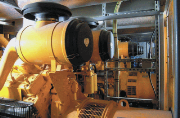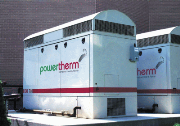 The UK has already felt the pinch of rising energy costs, and it is also predicted that energy sources will become insecure and unreliable in the coming years. Here, shentongroup highlights the importance of combined heat & power (CHP) in securing future supply
The UK has already felt the pinch of rising energy costs, and it is also predicted that energy sources will become insecure and unreliable in the coming years. Here, shentongroup highlights the importance of combined heat & power (CHP) in securing future supply
There is no doubt that Britain is facing a looming energy supply crunch and urgent action will need to be taken for the country to avoid future power blackouts and massive economic disruption. It is already predicted that the government will almost certainly fail to meet its renewable energy targets and even if the UK does cut its energy demand in half by 2050 through efficiency improvements, the country will still need 16 new power plants between now and 2030 and an additional four by 2050.
Even now, despite reassurances from the National Grid that it is capable of meeting demand, recent events indicate this is no longer the case. Power cuts used to be perceived as a winter problem caused by high winds, snow and thunderstorms bringing down power lines. Now there are daily reports on how major power cuts are affecting local communities.
The prospect of blackouts affecting, in particular, sophisticated IT and telephone systems, has put pressure on business and energy managers to implement an effective and robust strategy to ensure their business can continue to function when power cuts occur. The potential catastrophe caused by a power cut to a company’s ability to function has resulted in a need for standby power. Nowadays it is not only large companies that need standby power systems – SMEs including care homes, shops, business premises and filling stations all need to be prepared for the inevitable power cut.
UPS problems
Most companies understand the need for power management systems and many have installed UPS (uninterruptible power supply) systems believing that a UPS will solve the problem of power cuts. However, as the problems with the country’s energy supply continue to multiply, power cuts are no longer lasting minutes but often hours and even days at a time.
Typically, a UPS has just a 10-20 minute battery life. Therefore, many companies realise that a UPS alone is insufficient to enable them to keep their business running if a power cut last longer than a few minutes. With more frequent and longer lasting power cuts occurring, many companies realise that they need to support their UPS with a generator.
 Standby power and UPS
Standby power and UPS
Standby generators provide additional back-up to a conventional UPS. Installed as part of a SPS (standby power system) the generator takes over before the batteries of the UPS run out, smoothly transferring the network over as part of the SPS. When mains power returns, the generator will automatically switch back to conventional power after it has ensured that the power will remain constant.
Auto-mains failure
When the mains supply fails, or goes out of acceptable limits, the AMF panel disconnects the faulty mains supply, starts the generator and connects it to the load. On mains return, the AMF will transfer the load back to the mains and shut down the generator.
Combined heat and power
Combined heat and power (CHP) is an excellent solution for controlling energy costs whilst improving the reliability of power and thermal energy supplies. CHP is the cogeneration of heat and electricity, in which the ‘spare’ heat produced, is turned into hot water. The principle is that a natural gas or biogas fuelled engine drives a generator that produces electricity. The heat from the engine and exhaust, which would normally be wasted, is absorbed by coolant water through a specially developed high efficiency heat exchanger. This energy, stored as hot water, is then usable directly for central heating, hot water, or indirectly for air conditioning. As a rule of thumb, the production of 1kW of electrical power creates 2kW of usable heat energy.
CHP systems also provide a local power source capable of keeping critical facilities operating during power outages. When power outages occur resulting in a blackout, CHP plants can be ‘islanded’ from the grid and will continue to operate normally. Because they rely on natural gas, CHP plants offer an excellent solution to ensure power continuity in critical infrastructures such as hospitals, schools, airports, military bases and government facilities. In addition, CHP plants can improve the power quality during brownouts when computers and other sensitive equipment are affected by deviations in power quality.
No time to waste
Our electricity comes from a mix of power stations comprising of mostly gas but also coal fired and nuclear. During the next six years, 40% of this ageing fleet will have to be shut down due to environmental targets, safety or because they have become obsolete. As talks are still continuing between the government and energy providers as to where and when replacement power stations will be built, the problems of having an antiquated power system will manifest in more frequent and longer power cuts.
Businesses can no longer afford to drag their feet on putting in a robust power support system – they must act now to avoid power cuts having a derogatory affect on their livelihoods.


